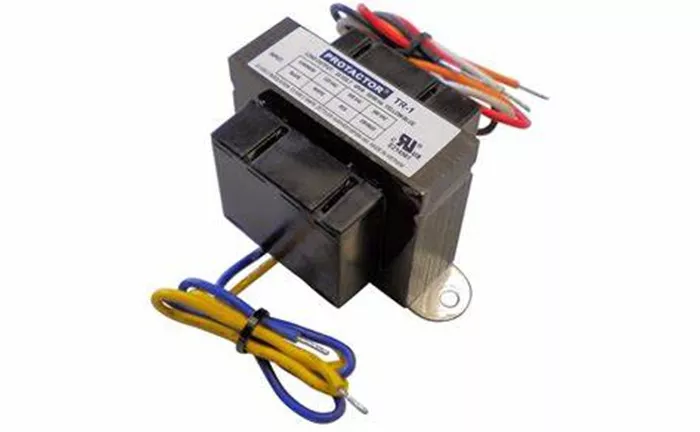Transformers are essential components in HVAC systems, playing a critical role in ensuring the efficient and safe operation of heating, ventilation, and air conditioning equipment. Understanding their functions and importance can help property managers, technicians, and homeowners maintain optimal indoor comfort and system performance.
The Basic Function of Transformers in HVAC Systems
Transformers in HVAC systems primarily serve to regulate voltage. The electrical power supplied to buildings from the grid often comes at a higher voltage level, which is not suitable for most HVAC equipment. These devices step down the voltage to a safer and more usable level for components such as air conditioners, furnaces, and control circuits. This voltage regulation is crucial for preventing equipment damage and ensuring the safe operation of the system.
Key Roles of Transformers in HVAC Systems
Voltage Transformation
The primary function of transformers is to convert voltage levels. HVAC systems require various voltage levels for different components. For example, a furnace may need a lower voltage for its control circuits, while the main power supply operates at a higher voltage. Transformers step down the voltage to match the specific requirements of each component. This ensures that the equipment receives the right amount of power, enhancing both safety and efficiency.
Power Distribution
Transformers help distribute power efficiently to different parts of the HVAC system. Components such as blowers, compressors, and control modules may have unique voltage needs. Transformers ensure that each part receives the appropriate voltage, optimizing the overall performance of the system. Proper power distribution reduces energy waste and minimizes the risk of electrical overloads.
Control Circuit Power
Modern HVAC systems rely on sophisticated control circuits to regulate temperature, humidity, and airflow. Transformers supply the necessary low-voltage power to these control circuits, enabling them to function effectively. Without transformers, these control systems would not be able to operate, leading to inefficiencies and potential malfunctions.
Safety and Protection
Transformers also provide safety features for HVAC systems. By regulating voltage levels, they protect equipment from excessive voltage, which can cause damage or failure. Additionally, transformers often include protective devices such as fuses and circuit breakers, further enhancing system safety.
Types of Transformers in HVAC Systems
Step-Down Transformers
These transformers are commonly used in residential and commercial HVAC systems to reduce voltage. They take the high-voltage power from the main supply and step it down to a lower level suitable for HVAC equipment. For example, a 24V transformer is often used to power thermostats and other low-voltage control devices.
Step-Up Transformers
In some large commercial buildings, step-up transformers are used to increase voltage for long-distance power transmission. This helps reduce energy loss and ensures efficient power delivery over longer distances.
Isolation Transformers
Isolation transformers provide an additional layer of safety by separating circuits. They prevent electrical shocks and protect equipment from power surges or faults. These transformers are particularly useful in sensitive environments such as hospitals and data centers.
Importance of Proper Transformer Selection and Maintenance
Choosing the right transformer is crucial for the efficient operation of an HVAC system. An undersized transformer can overheat or fail, leading to system shutdowns. On the other hand, a properly sized transformer ensures reliable performance and extends the lifespan of the equipment.
Regular maintenance of transformers is equally important. Inspections can identify issues such as wear, overheating, or loose connections, preventing unexpected breakdowns. By maintaining transformers in good condition, property managers can ensure that HVAC systems operate smoothly and efficiently.
Troubleshooting Common Transformer Issues
Identifying and addressing transformer problems early can save time and money. Common signs of a malfunctioning transformer include unusual noises, a burning smell, or a unit that fails to turn on. In such cases, it is essential to inspect the transformer for damage or loose connections.
For example, if a furnace fails to start, the issue might be with the furnace transformer. Checking the transformer’s connections and ensuring it is receiving power can help diagnose the problem. Similarly, issues with an air conditioner’s transformer can cause the unit to malfunction, affecting cooling performance.
Conclusion
Transformers are indispensable components in HVAC systems, providing essential functions such as voltage regulation, power distribution, and safety protection. Understanding their roles and ensuring proper selection and maintenance can significantly enhance the efficiency and reliability of heating and cooling systems. By appreciating the importance of transformers, property managers and technicians can maintain optimal indoor comfort and extend the lifespan of HVAC equipment.
In summary, transformers play a vital role in the safe and efficient operation of HVAC systems. Their ability to regulate voltage, distribute power, and protect equipment makes them essential for maintaining comfortable indoor environments. Proper maintenance and attention to transformer health are crucial for ensuring the longevity and performance of HVAC systems.
Related Topics:

